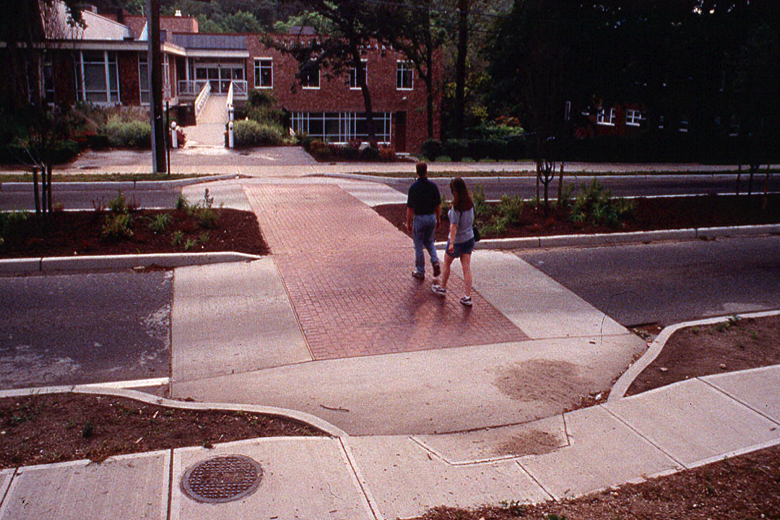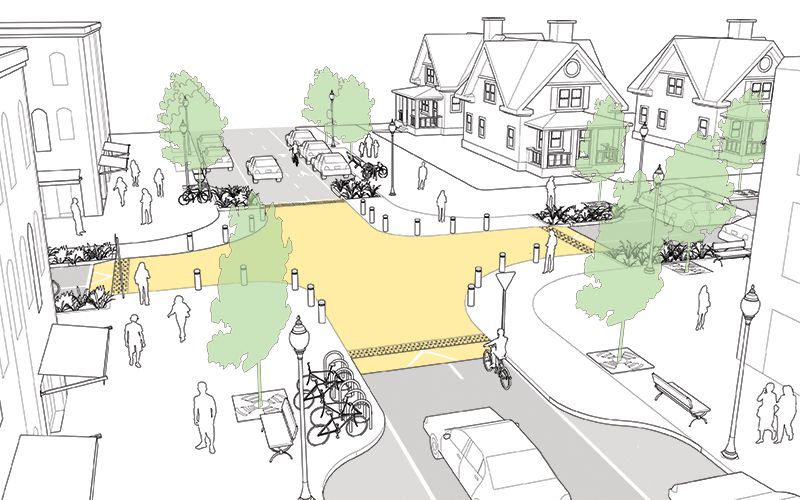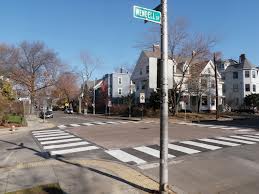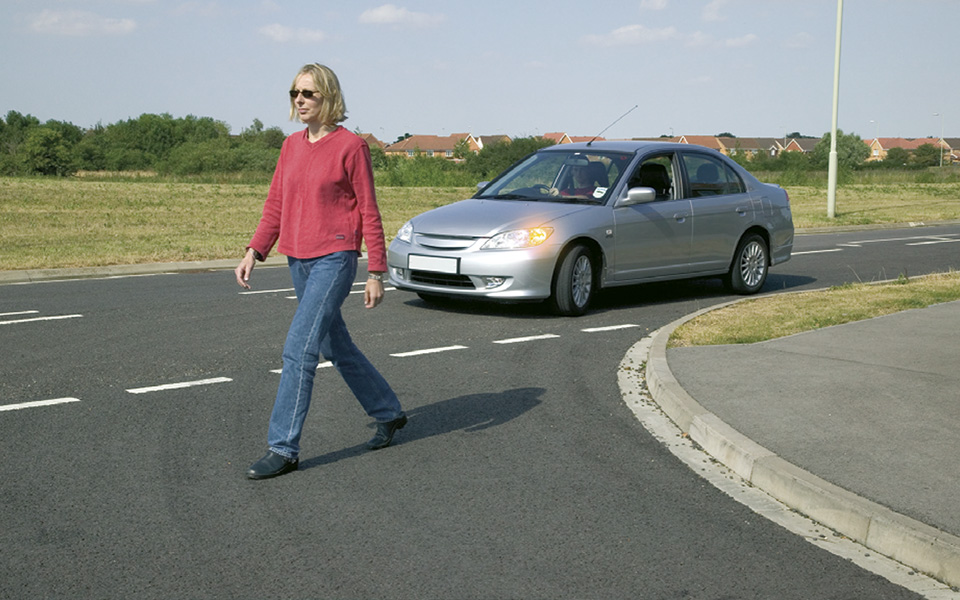I like the idea of raised crossover surfaces but they need to be gradual to permit snow removal. Abrupt speed bumps impair snow removal and can trap ice/water and affect drainage. While fancy road markings might be effective, they are of limited benefit when they are covered in snow.
I get the sense that all-way stop intersections are often used in certain areas of Toronto to control flow (to the point of hopefully discouraging traffic) rather than simply to protect the intersection. All-way stops still have a valid role, especially in rural and small urban settings and many intersections, including those in urban areas, simply have little to no pedestrian traffic to warrant special infrastructure. The prairie provinces leave (or at least used to) many of their rural intersections uncontrolled, but most everybody using them understands the rules and the sightlines are clear. I can't imagine uncontrolled (i.e. unsigned) intersections in Ontario, let alone in built-up areas - it would simply be carnage.









